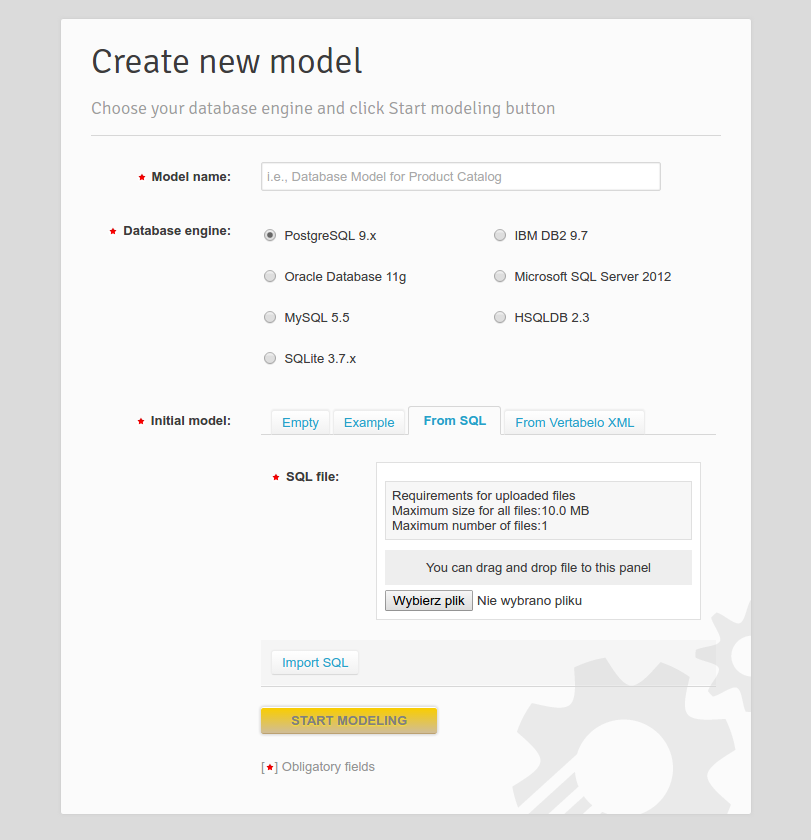Teie kommentaarid
Hello,
To make it work, please comment out/remove lines at the end of the sql file like:
'ALTER TABLE xxx MODIFY yyy int(11) NOT NULL AUTO_INCREMENT;'
I have removed those lines from your sql and it worked.
Our sql2vertabelo tool has trouble in parsing such statetments.
Also I have shared to you a model which i got. Feel free to unshare me.
Hello
We provide a way to embed model on a website. An article which explain how to do it: https://www.vertabelo.com/blog/vertabelo-news/how-to-embed-your-database-model-into-a-website Is this what you need? If not please tell what is missing.
Hello,
You can import an existing database into Vertabelo with help of our Reverse Engineering tool. An article about it: http://www.vertabelo.com/blog/documentation/reverse-engineering
You can also import an sql file when creating new model, screenshot:

I hope this helps
Hello,
Oracle 11g does not support ON UPDATE clause. Please see documentation on REFERENCES: https://docs.oracle.com/cd/B28359_01/server.111/b28286/clauses002.htm#CJAIHHGC
You can emulate this behaviour, tutorial: http://www.dba-oracle.com/oracle_tips_cascade_update.htm
We don't disable 'on update' select for Oracle in UI so it might be confusing...
Note: If you choose another DB engine (for example Postgres), Vertabelo will generate ON UPDATE clause.
Hello,
This is not possible.
I will move this topic to the idea category. Let's wait for comments and upvotes to see how important it is for others.
As http://www.vertabelo.com/blog/documentation/vertabelo-in-house-installation-guide mentions, the installation process asks for an application URL.
In case of AWS it will be the address of AWS server (most likely IP or domain address), so it won't be a localhost.
Hello,
There is no way to that easily right now. You can generate 'drop' script and 'creation' script, but it works only for fresh databases and requires deletion of data in the table.
We've implemented a migration tool which can do that, but we are still testing it. We are going to release it in about 2 weeks.
I hope this helps.
Customer support service by UserEcho


Hello,
I have answered for privert ticket, but this might be helpful to others.
The reverse engineering tool imports tables from database directly.
Import from SQL script can be done on the 'new model' page.
Best regards,
Adam Mościcki